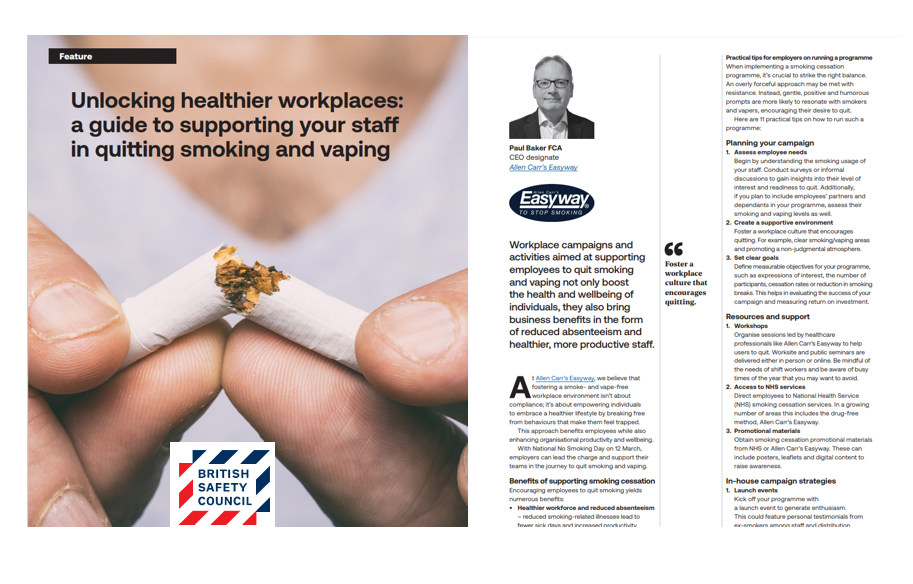What chemicals are in a cigarette?
Have you ever studied a list of cigarette ingredients or have you ever wondered what is in cigarettes?

In this article, we will explore what’s inside a cigarette, which chemicals in cigs can cause cancer and consider whether rolling your own cigarettes can be a safer alternative to regular cigarettes.
What’s in tobacco smoke?
Before we consider the ingredients in cigarettes – let’s look at the content of tobacco smoke.
Tobacco smoke contains over 5,000 chemicals, many of which are harmful to health. Among these, nicotine is the primary addictive component.
Carbon monoxide, a toxic gas, reduces oxygen delivery to the body
Tar, a sticky substance, contains numerous carcinogens that can lead to lung cancer and other respiratory diseases.
Formaldehyde, benzene, and arsenic are other toxic chemicals found in tobacco smoke, contributing to its harmful effects.
Acrolein, ammonia, and hydrogen cyanide are irritants that damage the respiratory tract.
Polycyclic aromatic hydrocarbons (PAHs) and nitrosamines are potent carcinogens present in the smoke.
Metals such as cadmium, lead, and chromium further exacerbate the toxicity.
The combination of these chemicals not only impacts smokers but also poses serious health risks to nonsmokers through second-hand smoke exposure, leading to various cancers, heart disease, and respiratory illnesses.
There is not one harmful cigarette chemical but many thousands.
Here are a few of the chemicals in tobacco smoke and other places they are found:
- Acetone—used in nail polish remover
- Acetic acid—an ingredient in hair dye
- Ammonia—a common household cleaner
- Arsenic—used in rat poison
- Benzene—found in rubber cement and gasoline
- Butane—used in lighter fluid
- Cadmium—active component in battery acid
- Carbon monoxide—released in car exhaust fumes
- Formaldehyde—embalming fluid
- Hexamine—found in barbecue lighter fluid
- Lead—used in batteries
- Naphthalene—an ingredient in mothballs
- Methanol—a main component in rocket fuel · Nicotine—used as an insecticide
- Tar—material for paving roads
- Toluene—used to manufacture paint
Making the decision to quit smoking can have hugely positive effects on your health.
What ingredients in cigarettes cause cancer?
Cigarettes contain numerous ingredients that contribute to cancer risk, primarily through the inhalation of toxic chemicals in the smoke.
Key carcinogens include polycyclic aromatic hydrocarbons (PAHs) and nitrosamines, which are produced during the burning of tobacco.
These chemicals damage DNA, leading to mutations and cancerous growths.
Another major carcinogen is benzene, which is linked to leukaemia. Formaldehyde, a known carcinogen, causes cellular damage and is linked to nasopharyngeal cancer.
Arsenic, present in tobacco smoke, increases the risk of lung and skin cancers.
Metals like cadmium and lead are also found in cigarette smoke and have carcinogenic properties.
Additionally, radioactive elements such as polonium-210 and lead-210 contribute to cancer risk.
The presence of acetaldehyde, which enhances the addictive effects of nicotine, also plays a role in the carcinogenicity of cigarettes.
Together, the ingredients for a cigarette, form a lethal cocktail that significantly increases the risk of various cancers, including lung, throat, mouth, and oesophageal cancer.
How do chemicals in tobacco smoke lead to cancer?
Chemicals in tobacco smoke lead to cancer primarily through the introduction of carcinogens into the body, which damage cellular DNA and disrupt normal cell functions.
Carcinogens like polycyclic aromatic hydrocarbons (PAHs) and nitrosamines, produced during tobacco combustion, directly cause mutations in the DNA of cells, triggering uncontrolled cell growth and tumor formation.
Benzene, another carcinogen, affects bone marrow, leading to blood cancers like leukemia.
Formaldehyde and acetaldehyde, also present in tobacco smoke, cause tissue damage and inflammation, promoting a cancerous environment.
Metals like cadmium and lead, along with radioactive elements such as polonium-210, further contribute to cancer risk by creating oxidative stress and additional DNA damage.
Nicotine, although primarily an addictive substance, also supports the growth and spread of cancer cells. These combined effects from various chemicals in tobacco smoke lead to a significantly higher risk of cancers, including lung, throat, mouth, and esophageal cancer.
Is it safer to roll your own cigarettes?
Rolling your own cigarettes is not safer than smoking regular cigarettes.
Both contain many thousands of harmful chemicals that pose significant health risks.
The tobacco used in roll-your-own cigarettes can contain the same harmful additives and carcinogens found in
regular cigarettes.
Additionally, individuals who roll their own cigarettes might smoke more frequently due to perceived cost savings, increasing overall exposure to harmful substances.
Therefore, the health risks remain substantial, and rolling your own cigarettes does not reduce the dangers associated with smoking.
Further reading:
Would you like to know some facts and stats about e-cigarettes and vaping? Additionally, read our guide on some practical tips on quitting.




